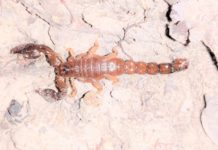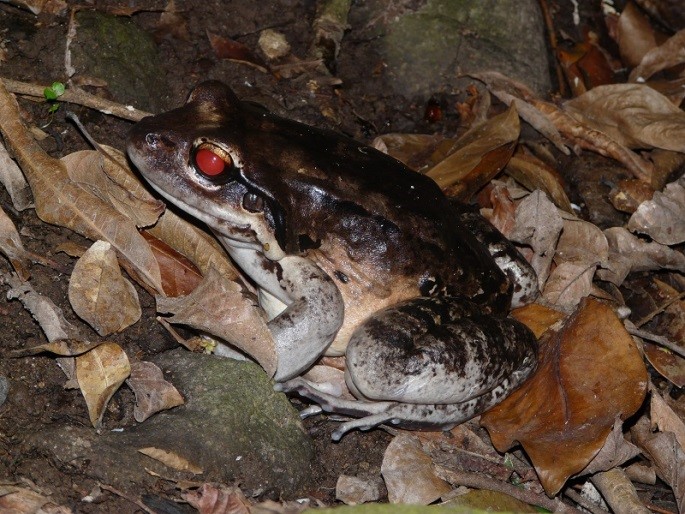First thing’s first – finding the frogs
This translocation was initially planned to take place in 2015. However, that year saw Montserrat along with the rest of the Caribbean experience the worst period o
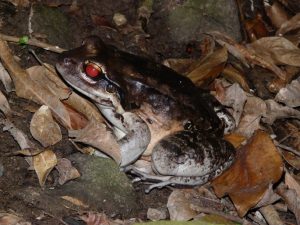
f drought for over 50 years. May to August, in what should have been the wet
season and breeding period for mountain chickens, saw the ghauts (local name for steams) dry up and local animal life hide away or dwindle. As such we had to postpone the translocation to this year.
However, this event left us with an important question to first answer – were our frogs still alive and well following this intense dry period? Both had been seen in early 2015 by
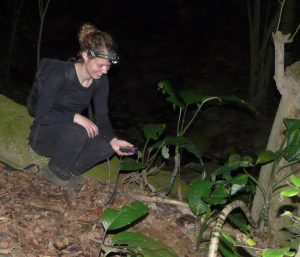
field workers from the Montserrat Department of Environment but nothing since the drought.
Hopes were raised towards the end of May when the male was spotted by local field worker Calvin ‘Blacka’ Fenton and Steph Jayson, a vet from Zoological Society of London who was out in Montserrat collecting information for a mountain chicken nutritional study we are collaborating on. Just a few days later, more fantastic news as the female was also seen with both reported as being in very good health. We knew these were the same individuals as they are both PIT tagged with microchips that have a unique identification number.
Now that both frogs were confirmed as being alive and with the funds available we rapidly put in place a timetable and schedule to undertake the translocation.
Planning, preparing and arriving in Montserrat
The plan was to move the female frog to the male’s location based on the fact that male mountain chickens are territorial, calling to attract females. The presumption was therefore that she would be less likely to try and move back to her original location than he would be if moved. Before moving her it had been decided to set up some artificial nest boxes in the male’s area to provide more nesting options and choices for them, in order to try and maximise the chances of successful breeding. A portion of the appeal funds were
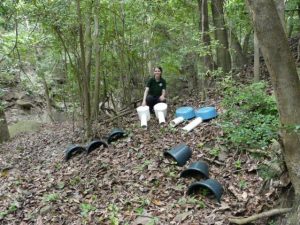
therefore used to keep Steph out for an extra week to do this as well as helping with the first stage of the translocation and monitoring. The rest of the funds were
used to send myself from Durrell out for two weeks, to pay local staff overtime and buy essential field equipment.
I travelled out to Montserrat on Wednesday 15 June for two weeks, overlapping with Steph for a week. Ensuring enough post-move monitoring
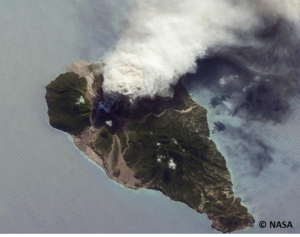
could be done was also very important. MCRP partners ZSL and Chester Zoo were both able to support the translocation by each sending out a member of experienced staff for two weeks. Luke Harding from ZSL and Katy Upton from Chester, would both arrive before I left to handover and stay until the weekend of 10 July.
For me personally this trip was particularly special as I would be returning to Montserrat for the first time in over five years, since spending nine months living and working there, and I was particularly excited to watching Montserrat loom larger on the short flight from Antigua. It would mean reuniting with Blacka and Lloyd ‘Lloydie’ Martin, the DOE Mountain Chicken Project Coordinator, who I had worked closely with before and meeting again, all being well, two of the frogs I had seen all those years ago during nights out to the forest.
Jeff Dawson, Amphibian Programme Manager, Durrell Wildlife Conservation Trust




